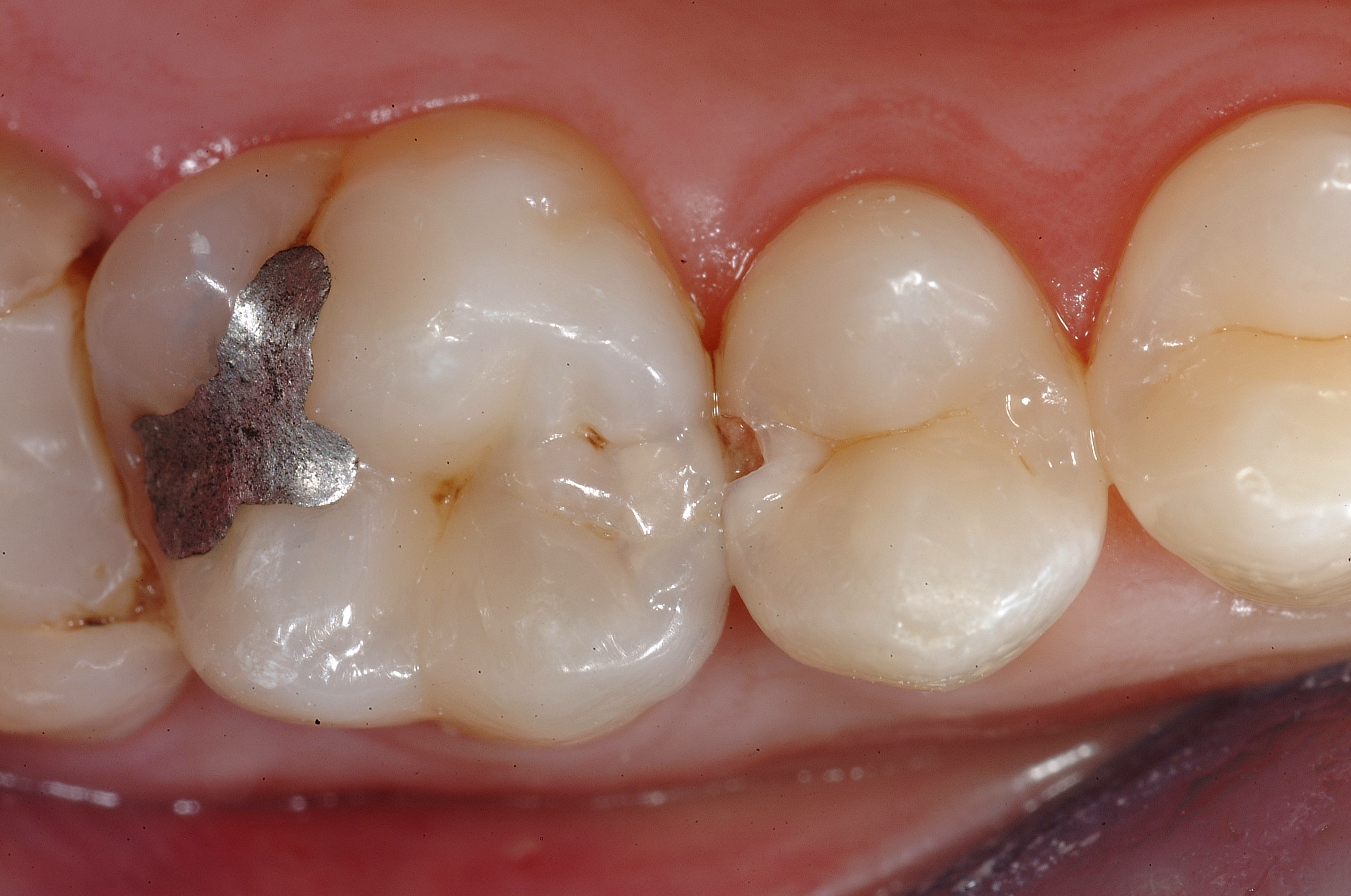Caries
The hard tissues of the tooth consists of:
- Outside enamel, 0,1 – 1,5 mm thick, covering the visible part of the tooth
- Dentin, which constitutes the main volume of the tooth
- Dental pulp which is the central part of the tooth, also named dental nerve
Caries is a disease, which destroys the hard tissues of the tooth. It develops from the surface towards the interior of the tooth, forming a cavity by the process of demineralization. This is a consequence of acid present in the dental plaque. The process is slow in the enamel but accelerates once it reaches the dentin. The patient perceives sensitivity to temperature differences and to sweet food, followed by spontaneous pain becoming more and more acute, particularly at night, due to an inflammation of the pulp, (pulpitis). If this process is not interrupted, a necrosis will develop which can provoke blood poisoning (septicaemia).
Caries usually develops on the occlusal, vestibular and interdental surfaces. Sometimes gingival lesions provoked by food compressed between the teeth accompany the interdental cavities.
Caries is detected by clinical and radiological examination.
During the initial phase of demineralization the enamel looses its natural brilliance and becomes chalky. At this stage, the dentist can treat the enamel with intensive applications of a fluoride gel and give oral hygiene instructions.
In all other circumstances the caries need conservative restorative treatment or prosthetics. In certain rare cases however the extraction of the tooth is the only reasonable option.
The best approach is always the preventive solution.


